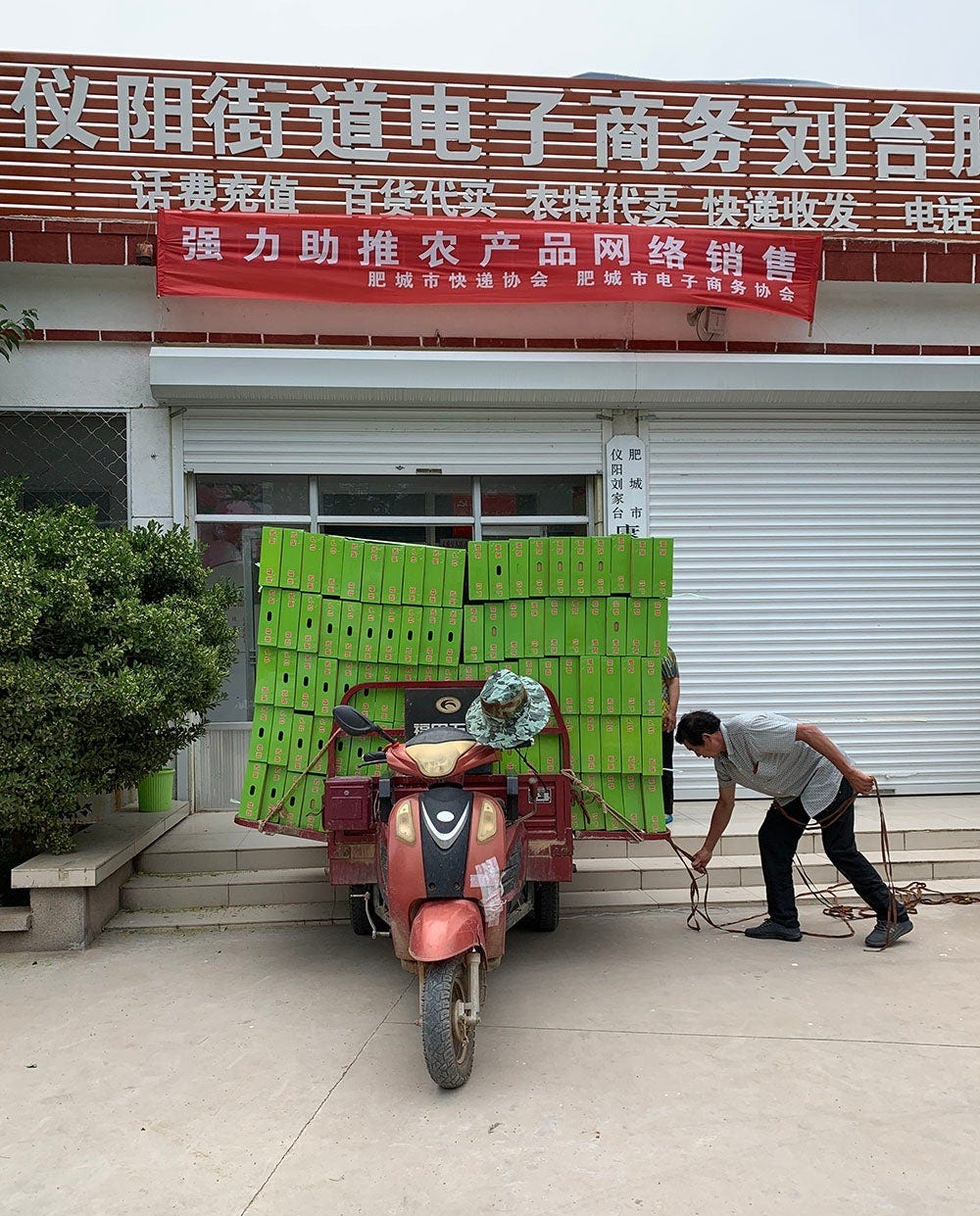🌯Inclusive FinTech Knowledge Bites [Week #66]
Village hubs in China and Indonesia fuel rural e-commerce, discover 4 last-mile models in Africa and how neighbourhood trust can solve Q-commerce.
Hey,
I’m Hugo Pacheco, and this is The Barefoot Economist —a newsletter where, every week, I break down three essential stories on last-mile technology, emerging market innovation, and financial inclusion. Consider it your bite-sized takeaway to stay informed, sharp, insightful, and easy to digest.
This week on The Barefoot Economist:
🔗 Village Hubs Powering Rural E‑Commerce in China & Indonesia
🔌 Plugging into African Frontier : 4 last-mile models connect products to underserved markets across geography
🚪 The Fridge Next Door: turning neighbors into nodes and trust into traction in Q-commerce
Enjoy your reading!
🔗 How Village Hubs Are Powering Rural E‑Commerce in China & Indonesia

Rural shoppers often sit on the sidelines of e‑commerce, priced out by sky‑high delivery fees and far‑flung drop‑off points. Two hero models emerge: a grassroots, decentralized network of “stage stations” (your friendly corner shop or village rep) versus an all‑in, platform‑owned logistics empire à la Taobao. Each has its merits—and its headaches. Decentralized stations tap into local trust and chat‑group buzz to slash rural costs overnight; the centralized approach, though pricier to build, warps the economics in its favor by cutting out layers of markup and flexing cross‑subsidies. But what if you can’t go fully centralised? Enter a clever coordination play: data‑sharing, fee caps, pooled routing—bridging the gap and giving independent stations a near‑Taobao power boost.
🌯 The Barefoot Insight
Social Ties Are Your Secret WeaponLocal stores and village WhatsApp groups serve as natural aggregation points, cutting rural pickup costs significantly. Decentralized stations lower participation barriers for isolated customers without heavy infrastructure investment.
Double Margins Hurt GrowthDecentralized Model
Pros: Quick to deploy, leverages existing social capital, boosts platform profit and welfare when rural transport costs are very high.
Cons: Suffers from double marginalization—both platform and station agents add markups—limiting overall efficiency.
Centralized Model
Pros: Eliminates double markups, allows platform to subsidize rural buyers to attract sellers, yields higher welfare and profit.
Cons: Requires significant capital, regulatory approval, and infrastructure control—often infeasible in many emerging markets.
Cross‑Subsidies Win HeartsBy absorbing rural delivery costs—think “free pickup” for villagers—and nudging those savings into seller fees, a central platform can ignite a virtuous cycle of more listings, more buyers, more volume.
Coordination Is the Silver BulletEven without owning the stations, a platform can orchestrate them: share demand forecasts, set fee floors and ceilings, route parcels together. Suddenly, the independent agents behave almost like a unified fleet.
A Roadmap to Inclusive E‑CommerceFor Platforms: Start local. Stand up stage stations in pilot regions, then layer on analytics‑driven incentives that nudge everyone toward optimal pricing.
For Policymakers: Keep regulations light on private drop‑points and invest in digital literacy, because tech alone can’t seal the last‑mile deal.
For Entrepreneurs: Grab your corner store. Partner with a platform, lean on your community network, and ride the wave of rural e‑commerce expansion.
From Social Networks to Supply ChainsWhile traditional e-commerce models struggle to reach rural markets due to high delivery costs and low digital participation, Taobao Village flips the script. Powered by Alibaba, this model taps into the social and commercial fabric of rural communities, turning farmers, shopkeepers, and village influencer agents into thriving online merchants. It’s not just about selling products; it’s about reweaving rural economies into the digital mainstream.
Below is a breakdown of the Rural-Led (Taobao) business model and the ecosystem that enables it.





